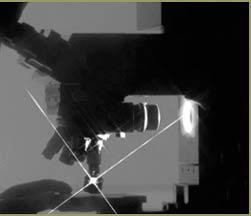
The heart and soul of a university is its brainpower. Since the inception of the university concept in Renaissance Europe, scholarship has centered on the brilliant mind: the scholar laboring in isolation, confined by the walls of disciplinary thought. For 500 years, the model has served us well, and no doubt will continue to be the genesis of new knowledge. But as the pace and scope of discovery quickens, and as disciplinary boundaries blur in the light of new information and ways of doing research, the age of the large interdisciplinary research center may be at hand. UW-Madison has always been good at building bridges between disciplines, but the concept, some think, is due for an upgrade. To confront the big issues of the day—among them threats of bioterrorism, emerging diseases, an aging population—it may be necessary to create a new model for scholarship, one that works across the seams of knowledge in both big-picture and concentrated ways. What's more, external forces, such as the federal agencies that fund research, hint that economies of scale and addressing broad problems will confer a competitive advantage. In some ways, UW-Madison already has started traveling this path. The organic development of multidisciplinary institutes, such as the Institute on Aging and the Waisman Center, and the rapid emergence of large new centers devoted to teaching and learning, are signs of such movement. And a new initiative, called cluster hiring, crosses traditional lines between academic disciplines. Funded jointly by the state of Wisconsin, the UW Foundation, and the Wisconsin Alumni Research Foundation, this effort concentrates diverse expertise in broad areas such as bioethics and nanotechnology. It is certain to position Wisconsin for future opportunities for growth and problem-solving. Without a doubt, solitary scholarship will continue to flourish. But down the road, the university will be creating new venues and bringing many minds to bear on critical issues. And those research environments will be very different from what we know today. |
 |
|||
|
For Dan van der Weide, Mark Eriksson, and Rob Carpick,
the world is a very small place. Professors of engineering and physics,
the trio comprises part of UW-Madison's nanotechnology cluster hiring
program. These scientists are convinced that the future of biology, chemistry,
physics, and engineering will be built with tools capable of hoisting
a single atom or grasping a protein inside a cell. At that scale, you
can pick the molecular lock to open a door for a new drug to enter a cell,
or devise a method for making a computer that will make today's fire-breather
look like an abacus. In the nanoworld, you can measure friction with a
microscope probe that trips over atoms one at a time. It is a world that
will change everything. Says van der Weide, "There are tremendous
economic and societal benefits that are going to arise from the work we
do at the nanometer scale." |
||||
| Home
| Chancellor’s Message Learning | Research | Community | Partnerships | Campus Year In Review | Facts & Figures |
||
| Chancellor's Page | UW Home | ||
File last updated: December 8, 2003 Feedback, questions or accessibility issues. Copyright © 2003 The Board of Regents of the University of Wisconsin System. |
||